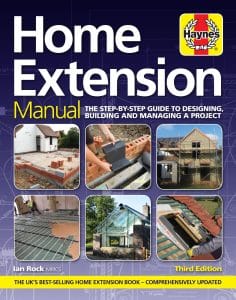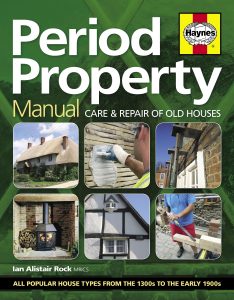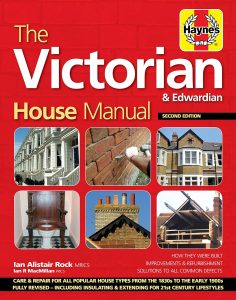Property Tips by Chartered Surveyor Ian Rock FRICS – from the Haynes House Manual series
Turning detective
– what surveys don’t tell you
Buying a home without getting a survey is a major risk. It’s obviously better to go in with your eyes open so you don’t get ambushed by serious defects that need fixing the minute you step over the threshold.
But there are some things even the most thorough survey won’t tell you. For example, how do you know if the person selling it is actually the legal owner? And what if there are hidden restrictions that allow the owner’s ex-partner to stay living there? Andhow do you know if the property you’re buying is clear of debt.
It’s the job of your conveyancer to investigate such matters, and surveyors sometimes flag up concerns in survey reports if they spot clues to these sorts of issues on site when carrying out their inspections. But it’s not unknown for things to get missed by conveyancers. So knowing a bit about the Land Registry can come in useful.
Registered property
‘Registration of title’ at HM (‘His Majesty’s’) Land Registry became compulsory for properties sold from as early as 1898 in London. This gradually spread throughout the rest of the country until finally Plymouth was included in January 1974.
However, it didn’t actually become law that all property titles had to be registered until around 1990. Details of registered properties are kept at the Land Registry.
The Land Registry
Your solicitor will apply to the Land Registry for a certified copy of the property’s ‘title information documents’ (for a small fee). These certified copies are known as ‘office copy entries’, the meat of which is contained within three registers – the Property Register, the Proprietorship Register and the Charges Register (see below). The information recorded in each of these registers comprises what used to be known as the property’s deeds. In total they may only extend to four or so pages.
These title information documents provide conclusive proof of the property’s ownership, backed by a watertight guarantee that the stated owner is the true owner. This obviously makes discovering who owns the title to a registered property a pretty simple matter. Because the ‘office copy entries’ are only copies (albeit official ones) it may sometimes appear that pages are missing where in fact blank pages in the original document have simply not been copied.
The key to tracing files at the Land Registry is the title number, a reference number that every registered property has, which appears at the top of each page of the ‘office copy entries’.
A: The Property Register
This describes the land by reference to the title plan and postal address. Any rights that other people have over the property, such as footpaths and rights of way, can be found here under ‘matters excepted and reserved’. Any rights of way that benefit the owner are also recorded. Leasehold properties have details of the lease (eg the remaining term, the parties, the ground rent etc).
B: The Proprietorship Register
This shows you who the present owners are – and until recently it also told you who the previous owners, which was quite interesting to know!
Owners of freehold property usually have what is known as ‘Title Absolute’ (ie ownership is guaranteed). This also applies to most leasehold owners, although in some cases ‘Good Leasehold Title’ may be shown instead, which is normally acceptable to lenders subject to confirmation that it complies with CML (Council of Mortgage Lenders) requirements.
The weakest form of ownership is ‘Possessory Title’, which sometimes applies where the original deeds have been lost, or where a claim to ownership is only supported by ‘adverse possession’ or ‘squatter’s title’. As well as ownership, prices paid for the properties have been recorded since 1 April 2000 and are available online.
C: The Charges Register
This alerts you to restrictions on a property such as any mortgages or other loans secured on it. It will also flag up any restrictive covenants. Sometimes these are simply referred to in the form of a note, cross-referenced to an old conveyance document that can be traced back to a time before the property was registered. In such cases a little detective work may be required to unearth a list of restrictions, which are normally referred to by the seller’s solicitor in the draft contract as ‘encumbrances’.
More rarely you might come across ‘cautions’ declaring a wife or a partner’s right to remain in occupation when the property is sold. Clearly this is not something most buyers would particularly relish, so the seller may need to apply to have these removed (‘warned off’). Similarly a legal ‘restriction’ may appear in the register giving notice of other people’s legal interests in the property.
Fortunately it’s most unusual to encounter such complexities for the average property being conveyed, but should something of this type come to light there’s obviously considerable potential for serious delays. If charges have to be removed or cancelled it may mean that a third party has to be officially notified, or that the sale be ‘authorised by the court’ – so you can wave goodbye to a swift conclusion.
Here you can search the Land Registry and download Title Deeds from just £3.00
See Rightsurvey.co.uk for a quick guide to survey prices
Check out our other posts for more info that will help you pay the right price for the right property.
We would always recommend using RICS certified surveyors in every instance – don’t get caught out, get instant quotes for RICS surveyors here.
Ian Rock’s Rightsurvey property tips are taken from the Haynes House Manual series.







